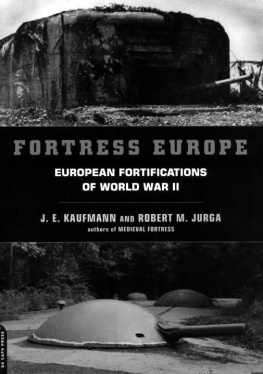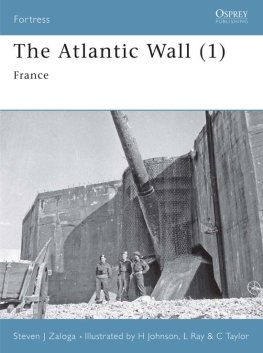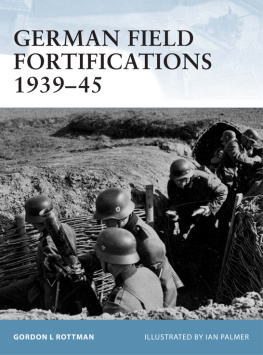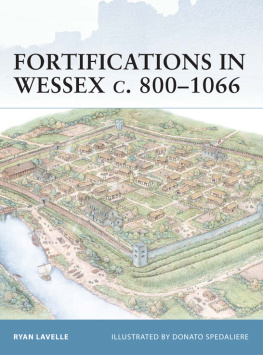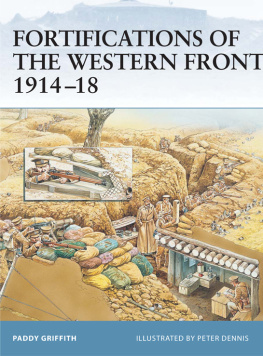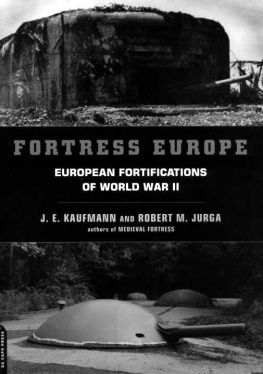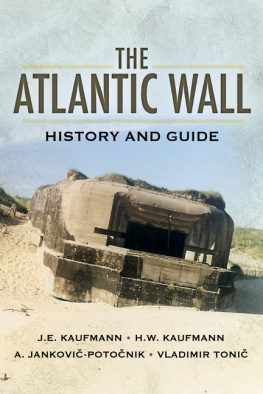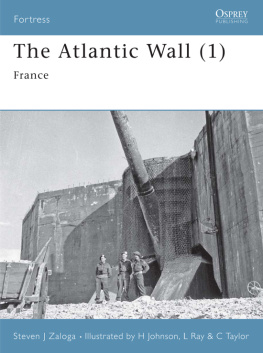J.E. Kaufmann
Robert M. Jurga
H.W. Kaufmann




CONTENTS
Chapter
Chapter
Chapter
Chapter
Chapter
Chapter
Chapter
Chapter
Chapter
Chapter
Chapter
Chapter
Chapter
Chapter
Chapter
ACKNOWLEDGMENTS
This book would not have been possible without the help of a number of people who have done everything from giving us photographs, to sending documents and summaries, and escorting us through the fortifications. We are listing our informants in alphabetical order but we want them to rest assured that their contributions were of equal importance and greatly appreciated. Next to their names we list the area in which they contributed information. "Photos" indicates that they also provided photos of the fortifications.
(Greece), Lee R. Unterborn (reference material), Karol Vasata (photos), Jean-Bernard Wahl (France), Peter Waltje (Germany & Photos), Patrice Wijnands (Belgium & Germany), Charlie Woods (Belgian artillery).
The Genie of Metz, Grenoble and Nice many years ago graciously provided us with some important documentation on the Maginot Line which has always been important in our writings on the French fortifications. We also thank the various civilian associations that are preserving the forts of Hackenberg, Fermont, Rohrbach, Schoenenbourg, Simserhof, and Immerhof in France and the fort of Bouda in the Czech Republic.
We would also like to thank Brian Fugate for permission to quote from Thunder on the Dnepr, Medwyn Parry and Roger Thomas for permission to make illustrations of British pillboxes based on their drawings, and Herbert Jager for the use of a drawing by Robert Jurga from Die Kustenbatterie Fort Kugelbake in Cuxhaven.
Thanks to Maria Urbanice of the Jagiellonian Library for helping us obtain important German documents and Raymond Mersch, curator of the fortification of A10 Immerhof of Hettange-Grande, who always opened the ouvrage to us. Also, Robert Jurga's director, W. Chrostowski, made it possible for Robert to continue on the research needed for this project.
Communications were made possible with the help of Dr. Martin Egger, Jerzy Pankiewicz, and Michal Rybinski who maintained contact between us and other contributors through e-mail. Also thanks to Anna Kedryna for helping Robert process all the material needed for the drawings. Special thanks to Lee R. Unterborn not only for providing valuable reference material, but also serving as a reader of the final manuscript.
Special mention must be made for the help provided by LTC Philippe Truttmann who has continued to keep us informed on the French fortifications and clarifying details for us. Gunther Reiss, as always, was there to help us make connections and provide data. Dag Sundkuist came through with the last minute additions on Scandinavia and Spain. Dr. Carlo Clerici's books and correspondence and descriptions gave us most of the information used in the chapter on Italy. Markku Airila and Ove Enqvist handled obtaining all our material on Finland as well as translating it into English. Finally, Svein Olsen prepared special summaries of every major fortified area in Norway and the weapons employed by both Norwegians and Germans between 1940 and 1945. Like Dr. Clerici's contribution for the Italian chapter, Mr. Olsen's contribution was vital for properly completing the chapter on Scandinavia. Mr. Olsen also included additional material on Sweden and Denmark.
INTRODUCTION
This book is a survey of most of the major and minor fortifications that were prepared and used in Europe before and during World War II. It is not meant to be a technical, in-depth study of military architecture, but rather a general overview of the subject, a reference for the professional and amateur historian. Each chapter includes a brief background section, examines the location and terrain that was defended, describes the fortifications, identifies some of the key components, and gives a brief history of those defenses in World War II.
The reader may find it necessary to refer to more detailed maps to identify some specific locations since space limitations permit us only to include a selection of illustrative material. Those who need more detailed information on individual positions and lines of fortifications will find that the bibliography contains a complete list of the resources we used as well as a complete list of suggested reading. However, many of the publications are difficult to obtain and some contain limited information.
The information on some of the fortifications in this volume may soon become outdated when additional facts come to light. In other cases, such as Rumania's, very little information was available, so we have presented all the material we were able to glean. We must caution the reader, however, that some of our sources may not have been among the most reliable.
Some countries, such as Hungary, have not been included because we were not able to find any information at all about their defenses. This does not necessarily mean that they had no permanent fortifications.
If any of our readers would like to share information with us for a future revision of this book, we encourage them to contact one of us at the following addresses:
SITE 0 (Fortifications and Artillery)

J.E. Kaufmann, PO Box 680484, San Antonio, TX 78268, USA
Robert Jurga, Boryszyn 33, 66-218 Lubrza, POLAND
Chapter 1
FRANCE
BACKGROUND
France's World War II era fortifications date back to the close of the Franco-Prussian War in 1871. After the humiliating defeat and harsh peace terms that resulted in the loss of the province of Alsace and a large part of Lorraine, the French government and military establishment resolved to fight to restore the lost territories and national honor. Until the time for "revenge" came to pass, the French High Command decided to erect a strong defensive barrier to prevent any further intrusions that might lead to another embarrassing episode.
While the French statesmen busied themselves forging alliances, the military rebuilt the army and began establishing a series of fortifications to protect vulnerable areas and major economic centers. General Raymond-Adolphe Sere de Rivieres was charged with the creation of a series of fortified rings linked together by a line of isolated forts. The most important of these rings were those of Verdun and Toul, and Epinal and Belfort. Others went up at Lille, Maubeuge, Langres, Dijon, Besancon, Grenoble, Briancon, and Nice. In addition, a number of isolated positions were established between most of these fortress rings. In most cases, Sere de Rivieres positioned the guns in open positions but placed the supporting facilities, such as the magazines, in protected locales. He used narrow and/or rear facing courtyards to reduce the vulnerability of the exposed facade to high-angled fire and surrounded his forts with dry moats or fosses with coffres at the corners of counter scarps, covering them with infantry weapons.

